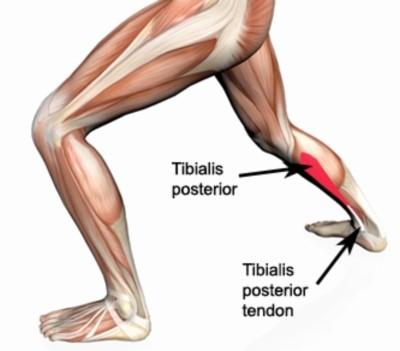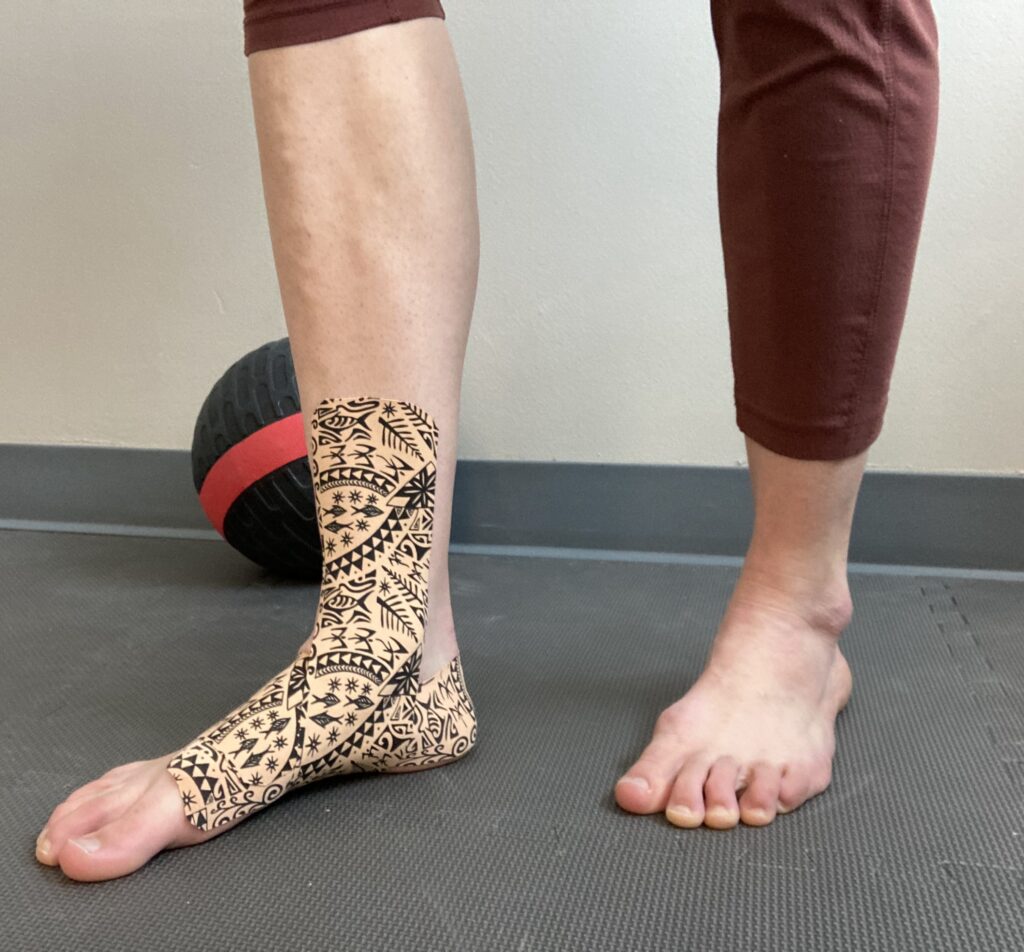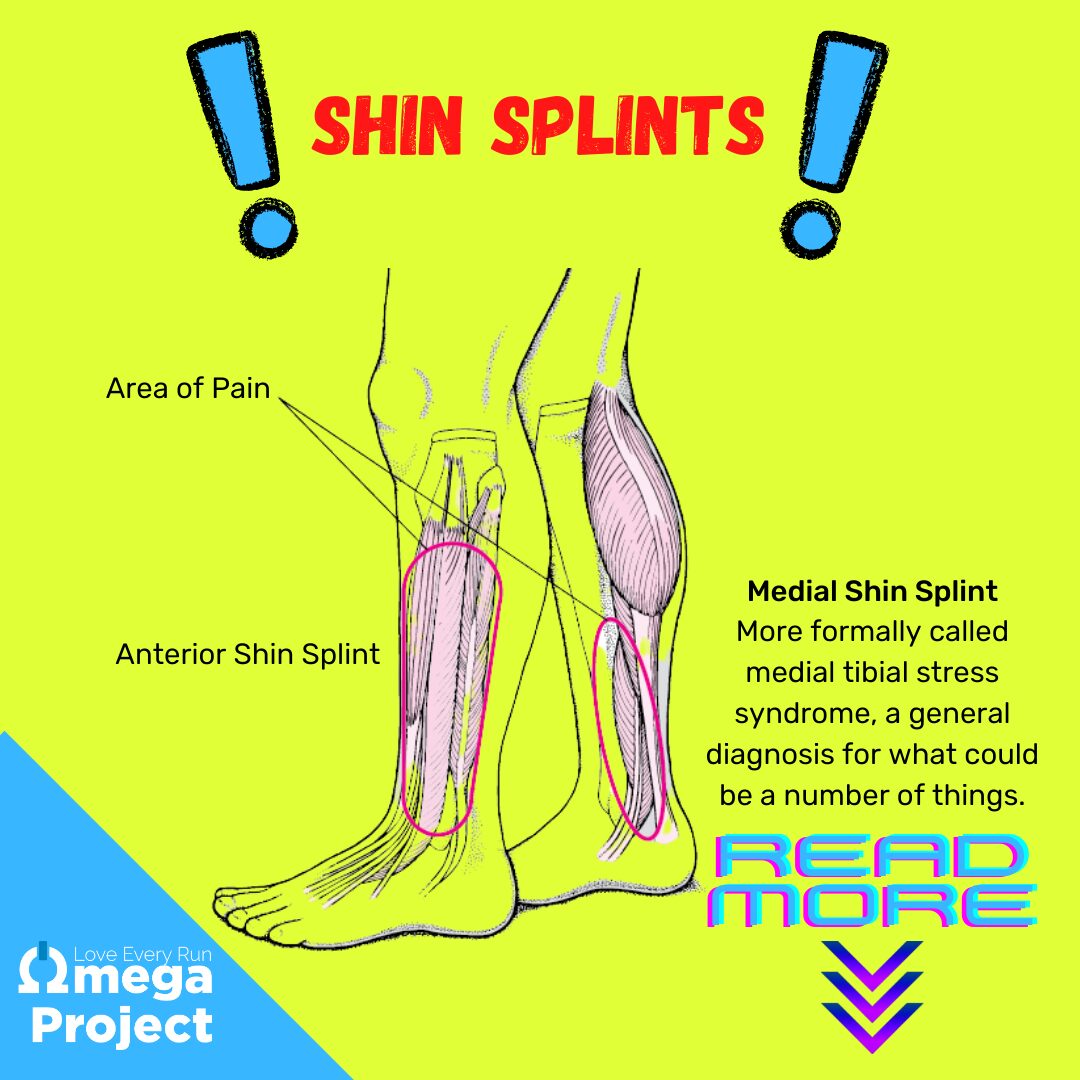One of the more common and stubborn running injuries is shin splints. We’re sure that most of you have either experienced them or know someone who has.
Shin splints can occur at the medial or anterior portion of the shin (tibia). Medial shin splints are more formally known as medial tibial stress syndrome. This injury tends to be more common and problematic so that’s what we’ll be focusing on during today’s quick tip.
More specifically, we’re going to go over the “WHAT.” What are shin splints exactly? Next week we’ll talk about the “WHY.” Why are you getting shin splints?
WHAT ARE SHIN SPLINTS?
POSTERIOR TIBIAL TENDONITIS – The posterior tibialis muscle is a primary supporter of the arch. The arch naturally goes through pronation and supination throughout the walking and running gait cycle. However, for many reasons, the arch may go through too much motion and put extra strain on the posterior tibialis muscle and tendon. This becomes a repetitive strain injury or overuse injury. It is more common to feel this where the tendon runs along the inside of the ankle to the arch, but some also feel pain where the muscle attaches at the medial shin.

PERIOSTITIS – This is the more common cause of medial tibial pain and it is an inflammation of the outer layer of the bone, the periosteum. Most often, pain and inflammation occur here due to repetitive stress from the muscles that attach to it (posterior tibialis and the other muscles that control foot stability and the movement of your toes). Periostitis is the beginning of a stress injury or stress reaction. If ignored, it can develop into a stress fracture.
STRESS FRACTURE – A stress fracture occurs as the stress reaction develops into an actual fracture line in the cortical bone. A common sign that your stress injury is progressing toward a stress fracture is that the pain becomes more pinpoint and is also most tender to touch right where you feel that pinpoint pain. Another sign is that you are having pain at rest (sleeping, sitting at school/work).
NOW WHAT?
There are many causes of medial tibial stress syndrome and therefore, there may be many ways to manage symptoms. We’ll go into more detail next week but common causes include a rapid increase in volume/intensity (i.e. returning to pre-season after a summer of minimal training), change in shoes/surfaces, foot/ankle weakness, hip weakness, and running gait dysfunction.
For now, we have demonstrated a few go-to treatments for medial tibial stress syndrome:
1. Increase mobility where needed. In this video, we demonstrate increasing ankle mobility but we may also find you need increased mobility at the hip, for example.
2. Address the soft-tissues. In this video, we demonstrate a release of the posterior tibialis.
3. Strengthen where needed. In the video, we demonstrate a great exercise for improving the activation and strength of the posterior tibialis.
4. Taping for temporary support. The picture shows how we support the arch with Dynamic Tape. Dynamic Tape is supportive, whereas KT tape is more for feedback. We typically prefer dynamic tape for this reason. You can use tape or an orthotic to help reduce strain until you are able to address the limitations causing your injury. Ideally, we don’t want you to rely on this forever.

Come back next week to learn more about why you’re getting shin splints so that you can get on the road to recovery!

